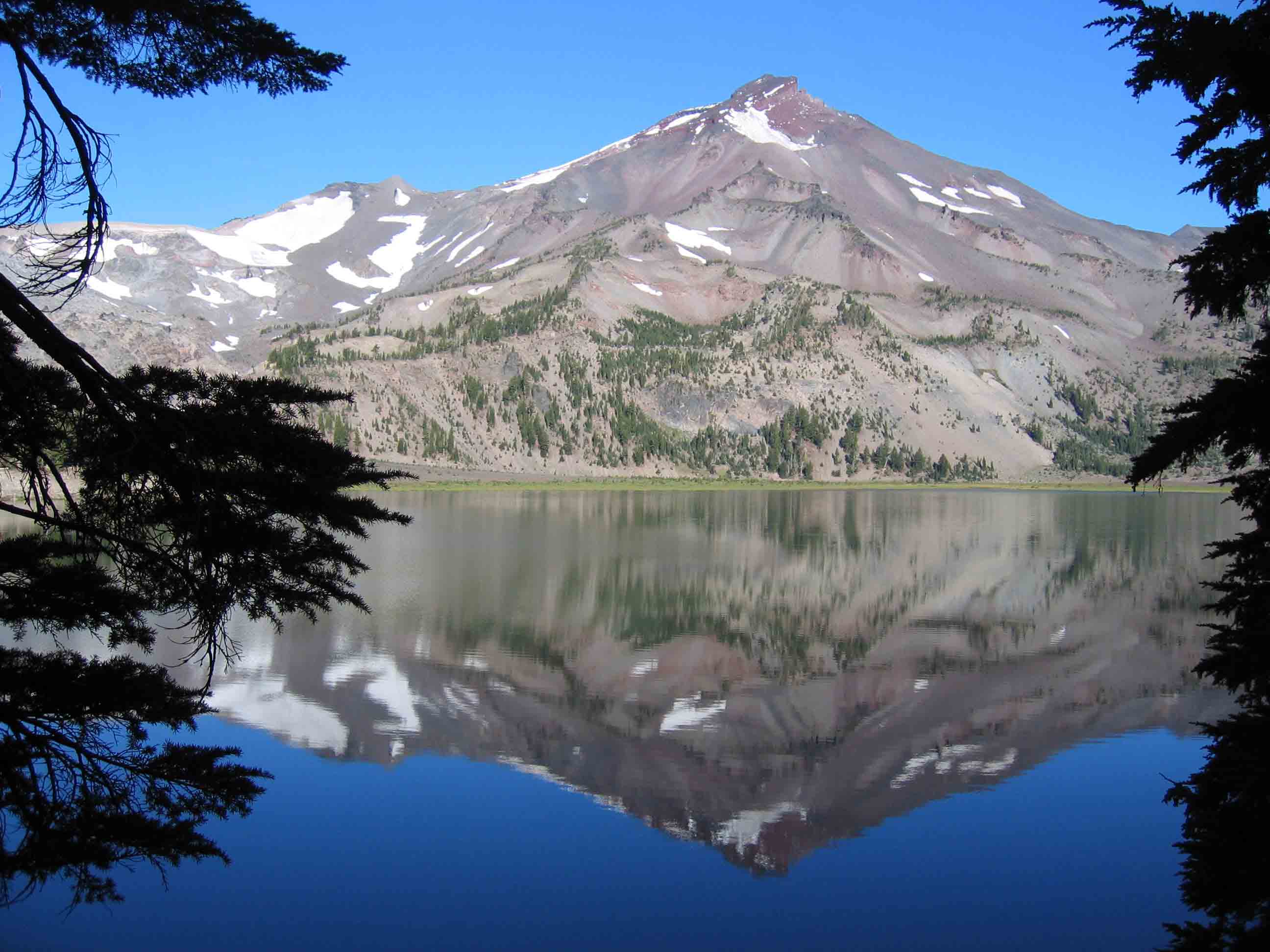

Small mountain glaciers respond sensitively to changes in temperature and precipitation (Lowe and Walker, 1997; Owen et al., 2003), thus determining the timing and extent of past glaciation can lead to inferences of past climate. Recent research on glacial activity during the last deglaciation has identified several late Pleistocene and early Holocene glacial advances in Washington, Idaho, Montana, California, and northeastern Oregon (Clark, 1997; Clark and Gillespie, 1997; Heine, 1997; Licciardi et al., 2004; Owen et al., 2003; Thackray et al., 2004). However, despite extensive research in the western United States, mainly in the North Cascades and the Sierra Nevada, the glacial record has been studied very little in the Oregon Cascades, particularly during the Holocene. Defining the timing and extent of past glacier change in Oregon will help assess if the late Pleistocene to Holocene glaciations were synchronous or varied throughout the western United States. This information can then be used to define the regional pattern of climate change of western North America during the last ~17,000 years.
The Three Sisters volcanoes, including Broken Top mountain, of Central Oregon contain numerous well-preserved lateral and end moraines on their eastern slopes and are considered to be Pleistocene and Holocene in age (Dethier, 1980; O'Connor et al., 2001; Scott et al., 1990; Sherrod et al., in press). Access to the eastern side of the mountains and the sparse vegetation cover, relative to the western flanks, makes the area an ideal field site for mapping and dating the glacial features.
At least four glacial stands occurred since 6.5 ka B.P. based on moraines located on the eastern flanks of the Three Sisters Volcanoes and the northern flanks of Broken Top Mountain in the Central Oregon Cascades. The youngest of these was the Little Ice Age (LIA) glaciation, which reached its maximum extent in Oregon 150-200 yrs. B.P. and is defined by the large sharp crested and unvegetated moraines adjacent to the modern glaciers. In isolated locations less than 100 m downslope from these moraines, a second set of sparsely vegetated lateral moraines marks the Late-Neoglacial stand of the glaciers between 2.1 ± 0.4 and 7.7 ka B.P. A third set of Early-Neoglacial end moraines is 300-700 meters downslope of the modern glacier termini, and postdates 7.7 ka B.P. From SST temperature data (Barron et al., 2003), we infer that this advance likely occurred between 4.5 and 6.5 ka B.P. Finally, the Fountonnor stand is marked by moraines 500-900 meters downslope of the modern glacier termini, and we infer these are latest Pleistocene or early Holocene.
Modern equilibrium line altitudes (ELAs) at the Three Sisters and Broken Top are approximately 2500 – 2600 m. During the LIA, the ELAs were 40 - 180 m lower, requiring cooler mean summer temperatures by 0.7 – 1.0°C and winter snowfall to increase by 10 – 60 cm water equivalent. The average Early-Neoglacial and Fountonnor ELAs were 130 – 300 m and 290 – 320 m lower than modern glaciers, respectively, requiring summer temperatures to be 0.7 – 1.6°C and 1.5 – 1.7°C cooler during the summer and winter snowfall to be 40 – 100 cm water equivalent and 90 – 100 cm water equivalent greater.